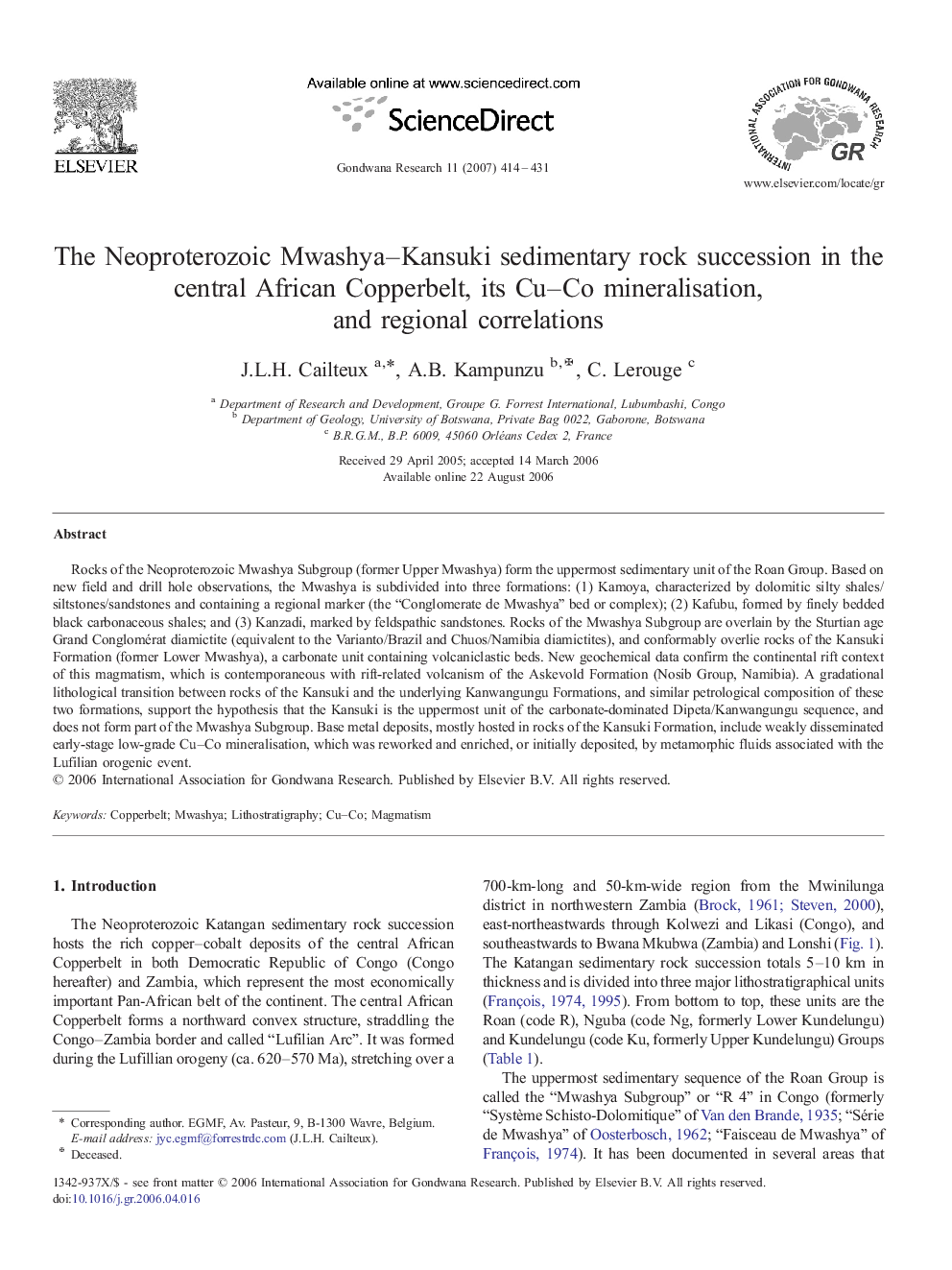| کد مقاله | کد نشریه | سال انتشار | مقاله انگلیسی | نسخه تمام متن |
|---|---|---|---|---|
| 4727654 | 1356387 | 2007 | 18 صفحه PDF | دانلود رایگان |

Rocks of the Neoproterozoic Mwashya Subgroup (former Upper Mwashya) form the uppermost sedimentary unit of the Roan Group. Based on new field and drill hole observations, the Mwashya is subdivided into three formations: (1) Kamoya, characterized by dolomitic silty shales/siltstones/sandstones and containing a regional marker (the “Conglomerate de Mwashya” bed or complex); (2) Kafubu, formed by finely bedded black carbonaceous shales; and (3) Kanzadi, marked by feldspathic sandstones. Rocks of the Mwashya Subgroup are overlain by the Sturtian age Grand Conglomérat diamictite (equivalent to the Varianto/Brazil and Chuos/Namibia diamictites), and conformably overlie rocks of the Kansuki Formation (former Lower Mwashya), a carbonate unit containing volcaniclastic beds. New geochemical data confirm the continental rift context of this magmatism, which is contemporaneous with rift-related volcanism of the Askevold Formation (Nosib Group, Namibia). A gradational lithological transition between rocks of the Kansuki and the underlying Kanwangungu Formations, and similar petrological composition of these two formations, support the hypothesis that the Kansuki is the uppermost unit of the carbonate-dominated Dipeta/Kanwangungu sequence, and does not form part of the Mwashya Subgroup. Base metal deposits, mostly hosted in rocks of the Kansuki Formation, include weakly disseminated early-stage low-grade Cu–Co mineralisation, which was reworked and enriched, or initially deposited, by metamorphic fluids associated with the Lufilian orogenic event.
Journal: Gondwana Research - Volume 11, Issue 3, April 2007, Pages 414–431